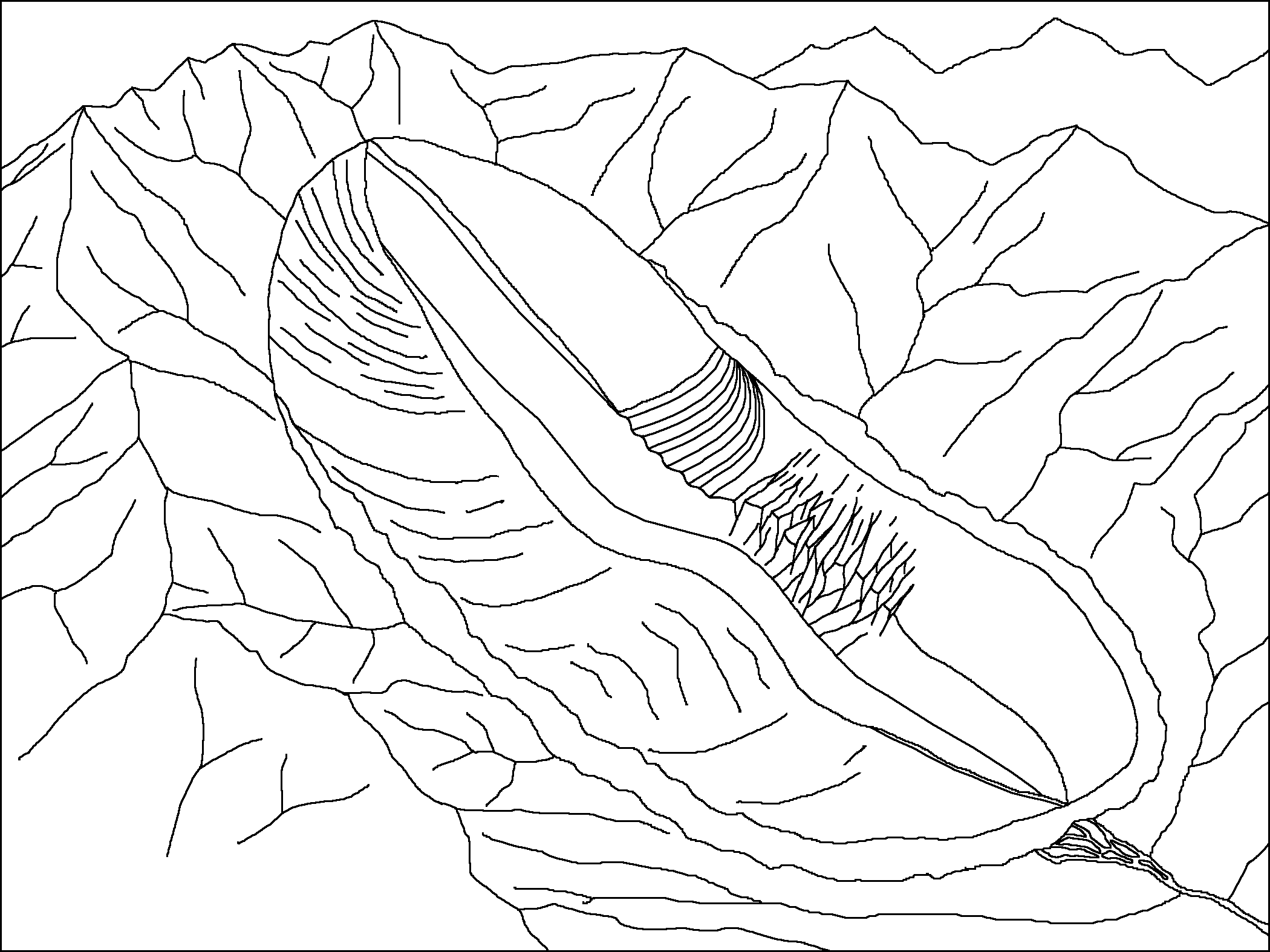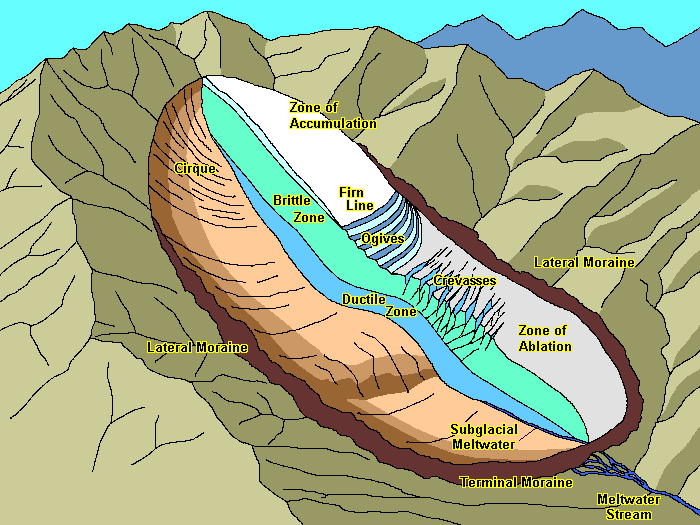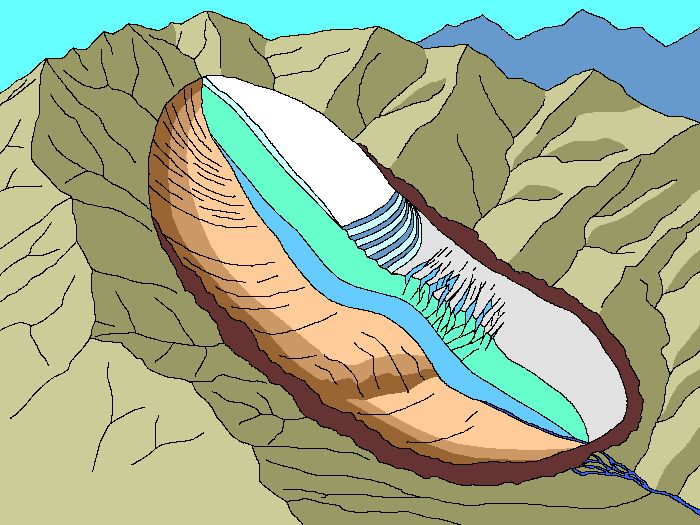How Glaciers Work
Steven Dutch, Professor Emeritus, Natural and Applied Sciences, University of Wisconsin - Green Bay
This diagram shows a small mountain glacier as it might look if we could cut it down the middle and see its interior.

Labeled Diagram
Glaciers form when it becomes cold enough that all the snow that falls each winter cannot melt during the summer. It may be cold enough for ice to accumulate either at high altitudes or near the poles. In mountains, like shown here, there is more snow in the winter at high elevations than can melt in the summer. In the zone of accumulation, ice builds up until it becomes thick enough to flow. It flows downhill into warmer elevations. Here, in the zone of ablation, it is warm enough to melt all the winter snow, but ice flowing down from above makes up the difference. When melting balances ice flow, the glacier ends. Changes in ice flow or climate may cause the ice front to advance or retreat until the balance is re-established. The boundary between the zone of accumulation and the zone of ablation is called the firn line and is often a sharp boundary where white recent snow above the firn line meets older, darker ice below it.
As snowfall varies with the seasons, the flow of ice speeds up and slows down. Many glaciers have curving ridges, called ogives, that mark alternating periods of fast and slow flow, much like the growth rings in a tree.

Ice near the surface in the brittle zone breaks under stress, but deeper down where the pressure is greater, the ice flows without breaking. This zone is called the ductile zone. If the glacier flows over an obstruction, the brittle surface breaks up into crevasses.
Since ice flows like a very thick fluid, it can't get into tight spots and erode like water can. Instead it simply planes off whatever is in the way, creating the U-shape so typical of glacial valleys. As the ice flows down from its source, it plucks rock away from the head of the valley, creating a bowl-shaped basin called a cirque. Some of the debris carried by the glacier is deposited along the sides to form a lateral moraine. Debris dumped at the end of the glacier is called a terminal moraine.
Melt water flows through tunnels in the ice and may emerge at the end as a melt water stream. Beneath the glacier, the water may be under hundreds of feet of ice and is under great pressure. If it can escape, the water pressure plus the sediment in the water can carve rock like a saw. If there are large amounts of melt water under the glacier, it lubricates the ice and may allow the glacier to advance very quickly.
Possible Coloring

Return to Geology Coloring Book Index
Return to Professor Dutch's Home Page
Created 03 February 2008, Last Update 15 January 2020